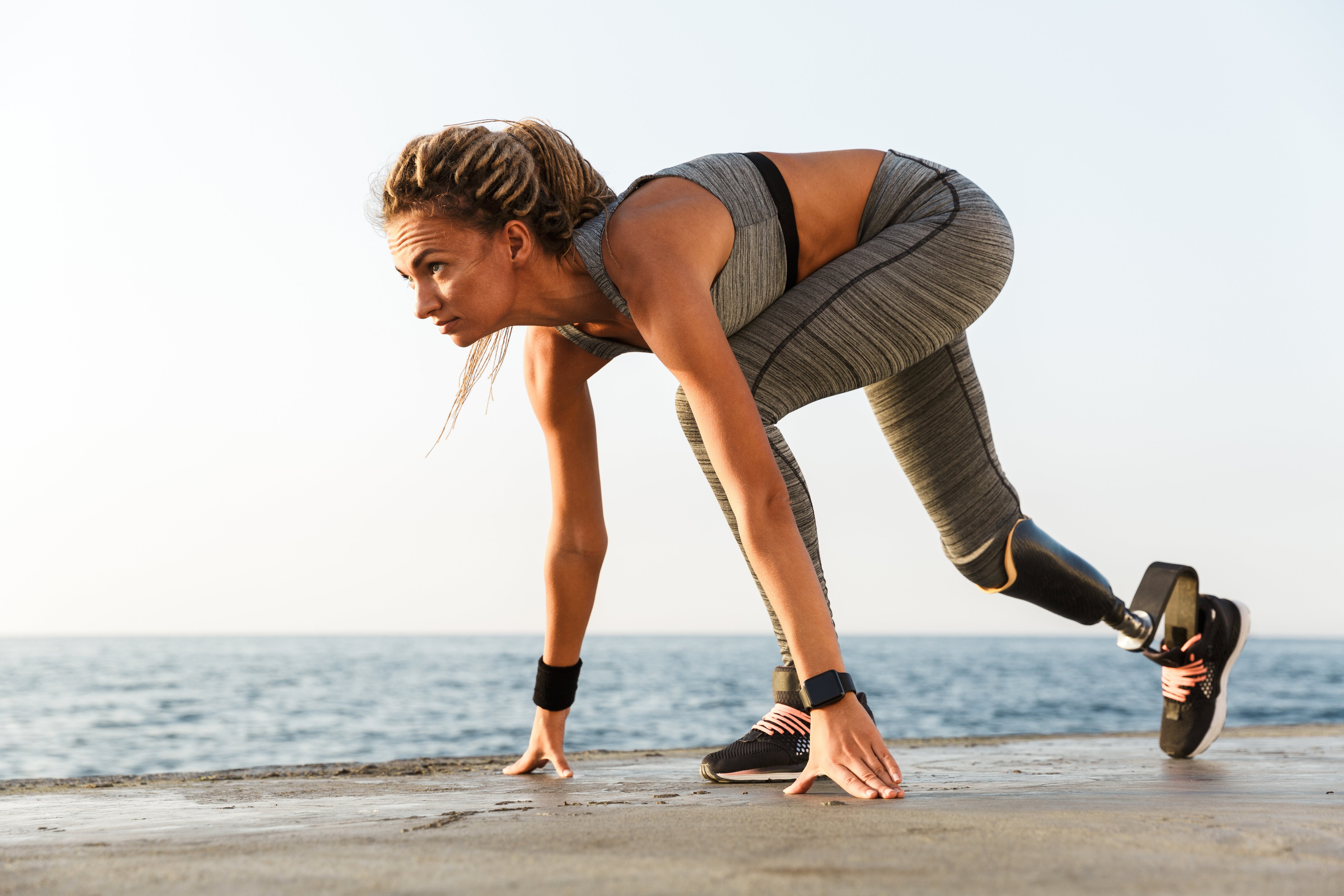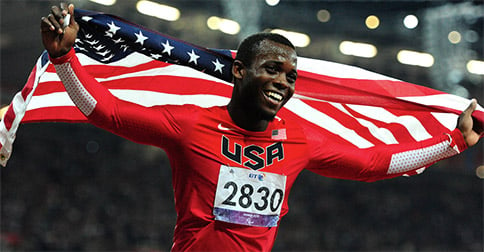Losing a limb is a big life adjustment, as is learning to live life with a prosthetic device. It can feel daunting at first, but soon you’ll return to most, if not all, of your normal activities! One hurdle in losing a leg is learning to run with your lower limb prosthesis. It’s an ongoing process, but we have some tips and things to keep in mind to get you started.
Energy Expenditure
Something important to think about while starting to run again with your prosthesis, is energy expenditure. Energy-wise, the cost of running on a prosthetic device is much greater than it is when running with two legs. Endurance exercise will be crucial in your process as you get used to running again. Also keep in mind that there are running specific prostheses! Using one of these as opposed to an everyday walking prosthesis will greatly reduce your energy cost, and you’ll be able to do more.
Asymmetry
Asymmetry is a very common problem in running, and essentially refers to an asymmetrical loading of the limbs. This means that more weight, and essentially more trust, is placed in the sound limb for various reasons. A lack of trust in your prosthesis, discomfort, or lack of strength in your residual limb can all contribute to asymmetry in your running. When more time and weight is spent on the sound limb, it’s subjected to extra force, and this can result in injury.
Wearing Schedule
While there’s a set schedule for wearing your prosthetic device when relearning how to walk, there isn’t one for relearning how to run. The basic rule of thumb is to start slowly, and pay close attention to your body. In the first week or so of running, be extra aware of your socket fit and make note of any discomfort you notice. If something feels off, talk to your prosthetist.
Once you start running with your prosthesis, take it a little bit at a time. At the beginning, don’t run more than 10 minutes without stopping. Stop to rest and to see if any red spots are appearing on your residual limb. Make sure you’re aware of anything that could be rubbing or irritating your skin.
Also keep in mind how long ago your amputation was—if your amputation was years ago, you may immediately be able to tolerate the weight put on you residual limb. If your amputation was more recent, it’ll take some time to adjust. Remember that too much too soon can easily result in injuries, which will only hold you back further. Running is something to ease yourself into—don’t push yourself too hard, and give yourself plenty of time to rest.
Running Examples
One of the most beneficial things you can do as you start incorporating running back into your life is watch videos of people running with their prostheses. There are plenty of video examples out there showing the form you should strive toward, as well as bad examples of common problems people experience while transitioning to this kind of running. The key to progress is self-awareness! Have a friend of family member take a video of you running, so you can better analyze your own form compared to examples you’ve researched.
Forefoot Strike Running with a Prosthesis
Forefoot strike running is a specific form of running with a prosthetic device and could be helpful to try. In this form, the runner lands on the ball of their foot instead of letting their heel have initial contact with the ground or treadmill. If you’ve looked at running prostheses, you’ll notice that there is no heel, so on that “foot,” it would be like running on your tiptoes.
The idea with this running form is to adjust your sound limb to run like your prosthetic device to reduce asymmetry. If you’re tiptoe running on your prosthetic leg, and running “normally” (heel then toe) on your other leg, this can result in serious form errors and even injury. If you’ve had both legs amputated, this isn’t something you need to practice—both your prostheses will automatically land in this position.
Forefront strike running places different demands on the muscles in your calf and foot, so you’ll need to focus on strengthening those muscles before you completely transition. It will be a slow transition, but be patient—it will help you avoid serious injuries that could keep you from running altogether! Also be aware that, if you’ve had ankle problems in the past, this form of running may not be for you.
Talk to your physical therapist about specific training regimens for you! Everyone is different, and everyone will transition at their own pace—be patient, listen to your body and your physical therapist, and you’ll be running again in no time!
For more information, tips, and support, contact Biotech today!

